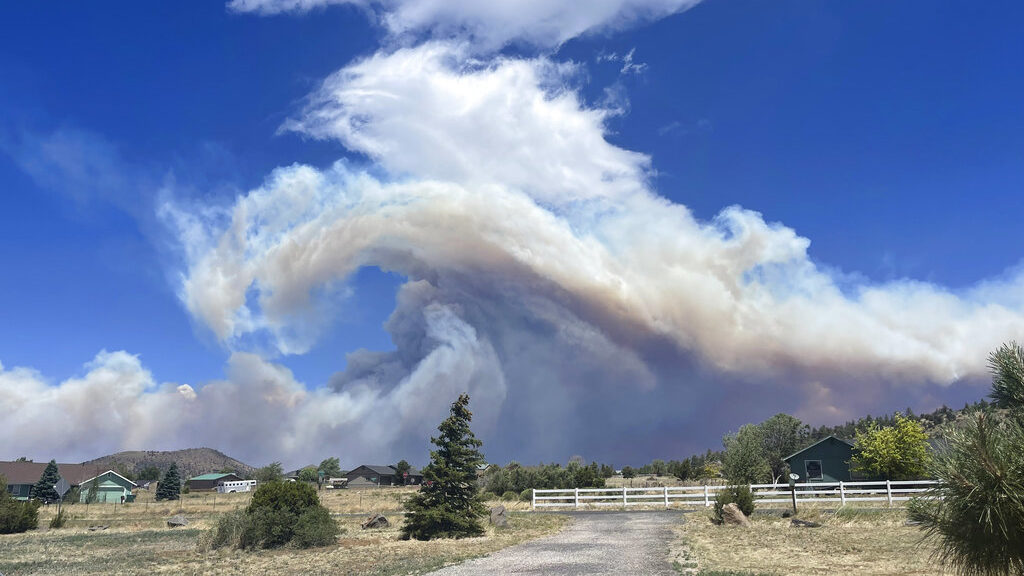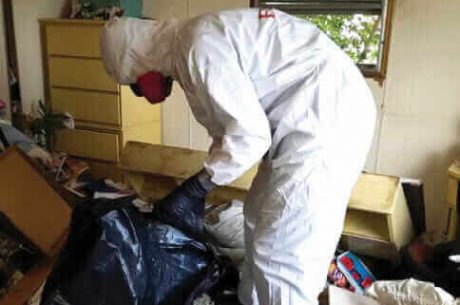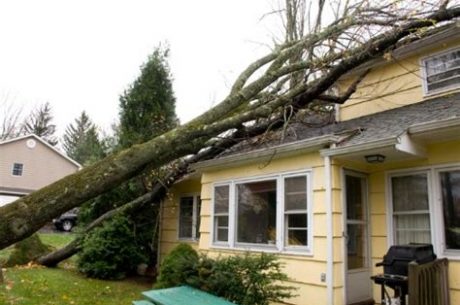Monsoon season, known for its intense and sudden downpours, brings with it a unique set of challenges for homeowners in Salt Lake City. While the rain can be a welcome relief from the summer heat, it also poses significant risks to properties, leading to water damage, flooding, and other related issues. One critical aspect that many properties owners overlook is the intricacies of insurance coverage for damage caused during the monsoon season. This blog post aims to shed light on the common misconceptions about insurance coverage and provide insights into how PuroClean of Layton can assist homeowners in navigating these challenges. When any property damage happens in Salt Lake City, call PuroClean of Layton at (801) 989-5554 or click here.
The Reality of Monsoon Season and Property Damage
Monsoon season in Salt Lake City can result in severe weather conditions, including heavy rainfall, fierce winds, and occasional flash flooding. These conditions can cause a variety of property damage issues, such as:
- Flooding: Rapid accumulation of water can lead to flooding in basements, crawl spaces, and lower levels of homes.
- Roof Leaks: Heavy rain and strong winds can damage roofing materials, leading to leaks and water intrusion.
- Foundation Damage: Persistent water exposure can weaken foundations, causing cracks and structural instability.
- Mold Growth: Excess moisture from flooding or leaks can create an ideal environment for mold growth, posing health risks.
- Electrical Hazards: Water intrusion can damage electrical systems, increasing the risk of fires and electrical shocks.
Given these risks, it is essential for homeowners to understand their insurance policies and ensure they are adequately covered.
Common Misconceptions About Insurance Coverage
Many homeowners believe that their standard homeowner’s insurance policy will cover all types of water damage caused by monsoon season-related incidents. However, this is not always the case. Here are some common misconceptions:
- Flood Damage: Standard homeowner’s insurance policies typically do not cover flood damage. Flood insurance is usually a separate policy that must be purchased through the National Flood Insurance Program (NFIP) or private insurers.
- Sewer Backup: Water damage resulting from sewer backups is often not covered under standard policies. Homeowners may need to add a sewer backup endorsement to their policy.
- Gradual Damage: Insurance policies often exclude damage that occurs gradually over time, such as slow leaks or foundation issues that develop due to long-term water exposure.
- Maintenance Neglect: Damage resulting from neglect or lack of proper maintenance is typically not covered. Homeowners are expected to take preventative measures to protect their property.
Steps to Take Before the Monsoon Season
Preparation is key to minimizing property damage during the monsoon season. Homeowners should take the following steps to safeguard their homes:
- Review Insurance Policies: Understand the specifics of your insurance coverage and consider purchasing additional policies or endorsements if necessary.
- Inspect and Maintain the Property: Regularly inspect your home for potential vulnerabilities, such as roof damage, foundation cracks, and drainage issues. Address any problems promptly.
- Install Flood Barriers: Consider installing flood barriers or sandbags around vulnerable areas of your property to prevent water intrusion.
- Maintain Gutters and Downspouts: Ensure that gutters and downspouts are clear of debris and functioning properly to direct water away from your home.
- Elevate Electrical Systems: Elevate electrical appliances and systems above potential flood levels to reduce the risk of damage.
Despite taking preventative measures, property damage during the monsoon season can still occur. If your home suffers damage, follow these steps:
Hire a Professional Restoration Company: Engaging a professional restoration company like PuroClean of Layton can help ensure thorough and effective restoration of your property.
Document the Damage: Take photos and videos of the damage for insurance purposes. This documentation will be crucial when filing a claim.
Contact Your Insurance Company: Report the damage to your insurance company as soon as possible. Provide them with the documentation and any other necessary information.
Mitigate Further Damage: Take immediate steps to prevent further damage, such as removing water, drying out affected areas, and making temporary repairs. Keep receipts for any expenses incurred.

How PuroClean of Layton Can Help
PuroClean of Layton specializes in property restoration and can provide comprehensive services to address monsoon-related damage. Here is how we can assist homeowners:
- Emergency Response: Our team is available 24/7 to respond to emergency situations, ensuring prompt action to minimize damage.
- Water Extraction and Drying: We use advanced equipment and techniques to remove water and thoroughly dry affected areas, preventing further damage and mold growth.
- Mold Remediation: If mold growth is detected, we provide effective mold remediation services to ensure a safe and healthy environment.
- Structural Repairs: Our experienced professionals can repair structural damage, including roofing, foundation, and drywall repairs.
- Insurance Coordination: We work closely with insurance companies to facilitate the claims process, providing the necessary documentation and ensuring a smooth and efficient experience for homeowners.
Understanding the Insurance Claims Process
Navigating the insurance claims process can be complex and overwhelming, especially during the stressful aftermath of property damage. Here’s a step-by-step guide to help you through the process:
- Report the Claim: As soon as you notice the damage, contact your insurance company to report the claim. Provide them with detailed information about the extent of the damage.
- Insurance Adjuster Inspection: An insurance adjuster will be assigned to inspect the damage and assess the cost of repairs. Be sure to be present during the inspection to answer any questions and provide additional information.
- Estimates and Documentation: Obtain repair estimates from licensed contractors, including PuroClean of Layton. Provide these estimates and all necessary documentation to your insurance company.
- Review and Approval: The insurance company will review the claim and the documentation provided. They may request additional information or clarifications.
- Payment and Repairs: Once the claim is approved, the insurance company will issue a payment for the covered repairs. You can then proceed with the necessary repairs, ensuring to keep all receipts and records.
Tips for Maximizing Your Insurance Claim
To ensure you receive the maximum coverage for your monsoon-related property damage, consider the following tips:
- Understand Your Policy: Familiarize yourself with the specifics of your insurance policy, including coverage limits, exclusions, and deductibles.
- Maintain Detailed Records: Keep thorough records of all communication with your insurance company, including emails, phone calls, and letters.
- Document Everything: Take extensive photos and videos of the damage, as well as the repair process. This documentation will be invaluable during the claims process.
- Work with Professionals: Engage reputable contractors and restoration companies like PuroClean of Layton to ensure high-quality repairs and accurate estimates.
- Be Persistent: If your claim is denied or you receive a lower settlement than expected, do not hesitate to appeal the decision, or seek legal advice if necessary.
The Importance of Proactive Measures
While dealing with property damage during the monsoon season can be daunting, taking proactive measures can significantly reduce the risk and impact of such events. Here are some additional steps homeowners can take:
- Landscape Management: Ensure proper grading around your property to direct water away from the foundation. Consider installing rain gardens or swales to manage runoff.
- Sump Pump Installation: Install a sump pump in your basement or crawl space to prevent flooding. Regularly test and maintain the pump to ensure it is functioning correctly.
- Waterproofing: Invest in waterproofing solutions for your basement and foundation, such as sealants and coatings, to prevent water intrusion.
- Regular Maintenance: Conduct regular maintenance of your property, including roof inspections, plumbing checks, and HVAC system maintenance, to identify and address potential issues early.
- Community Preparedness: Collaborate with neighbors and community organizations to develop a collective preparedness plan, including sharing resources and information.
Navigating property damage claims during the monsoon season requires a thorough understanding of insurance coverage and proactive measures to protect your home. By dispelling common misconceptions, taking preventative actions, and knowing the steps to take when damage occurs, homeowners in Salt Lake City can better manage the challenges posed by the monsoon season. PuroClean of Layton is here to assist with comprehensive restoration services and support throughout the insurance claims process, ensuring your property is restored to its pre-damage condition efficiently and effectively. Do not wait until the storm hits—prepare now to safeguard your home and peace of mind. Call PuroClean of Layton at (801) 254-6204.
For more information on Monsoon season, read our blog post on 6 Great Tips for Monsoon Season Preparedness in Utah and How PuroClean of Layton Can Help Property Owners




 PuroClean of Layton
PuroClean of Layton